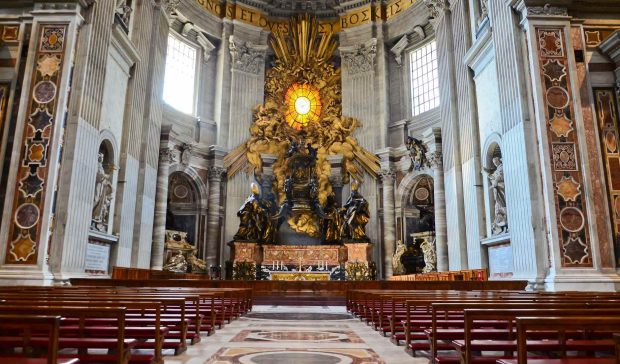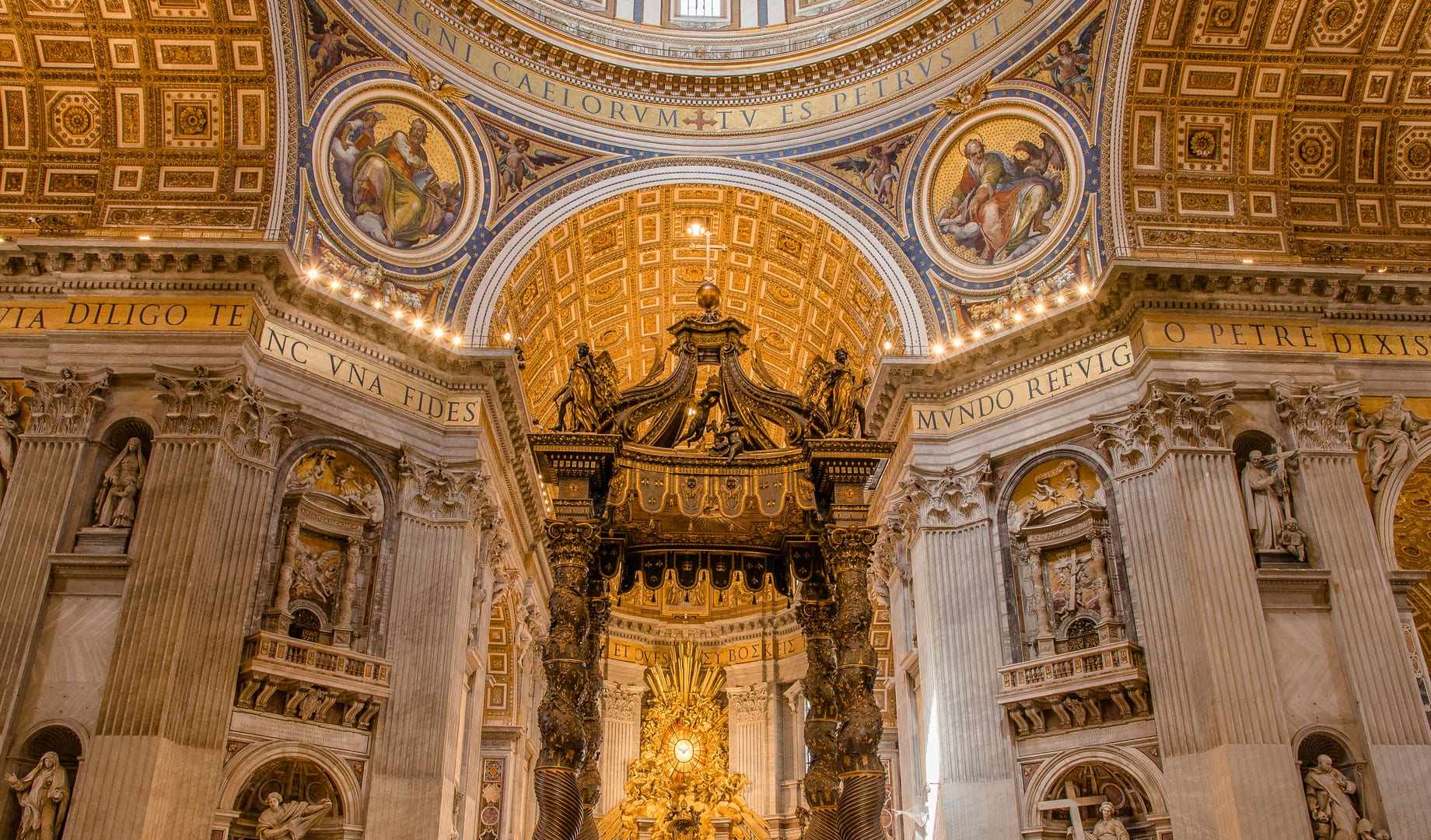Explore the profound significance of St. Peter’s Altar and Tomb, located within the magnificent St. Peter’s Basilica in Vatican City. Delve into the rich history, art, and spirituality associated with these sacred sites, and discover the awe-inspiring beauty that captivates millions of pilgrims and visitors from around the world.
St. Peter’s Basilica, located in Vatican City, is not only one of the largest churches in the world but also a significant pilgrimage site for Christians. Within the grandeur of St. Peter’s Basilica lies two sacred sites that hold immense historical and spiritual significance – St. Peter’s Altar and Tomb. Let’s take a closer look at the captivating beauty and profound symbolism associated with these revered places.
St. Peter’s Altar
The main altar of St. Peter’s Basilica is a masterpiece of art and craftsmanship that leaves visitors in awe. The artists who created it used bronze and adorned it with intricate details. As the focal point of the basilica, the altar serves as the site for the Pope to celebrate Mass during special occasions. The altar is surmounted by a canopy, known as the Baldacchino, designed by the renowned artist Gian Lorenzo Bernini. The Baldacchino is a soaring structure, standing over 98 feet tall, with twisted columns and richly ornamented with gold leaf. It is a magnificent example of Baroque art and architecture, adding to the splendor of St. Peter’s Altar.
The altar also houses a hidden relic believed to be the remains of St. Peter, who was one of the twelve apostles of Jesus and the first pope of the Roman Catholic Church. The relic, enclosed in a bronze box, is said to be placed directly above the burial site of St. Peter. This makes St. Peter’s Altar not only a work of art but also a deeply revered place of religious significance for Christians worldwide.

https://stpetersbasilicatickets.com/st-peters-altar
St. Peter’s Tomb
Located below St. Peter’s Altar lies the revered burial site of St. Peter, known as St. Peter’s Tomb. Many consider this sacred site the final resting place of St. Peter. who was crucified and buried on Vatican Hill, where St. Peter’s Basilica now stands. The tomb is located in a subterranean grotto, known as the Vatican Necropolis, which is a network of ancient burial chambers and catacombs that hold the remains of numerous popes and other prominent figures.
The Vatican Necropolis is not open to the general public, but a limited number of visitors can access it through special guided tours. The tomb of St. Peter is enclosed in a glass case and adorned with candles, flowers, and other offerings from pilgrims who come to pay their respects. It is a place of deep reverence and reflection for Christians, who consider St. Peter as the first pope and a key figure in the establishment of the Christian faith.
History and Symbolism
The history and symbolism associated with St. Peter’s Altar and Tomb are profound and carry immense significance for the Roman Catholic Church and its followers. According to Christian tradition, Jesus chose St. Peter be the leader of his followers and the foundation of his Church. St. Peter’s Altar, with its grandeur and splendor, symbolizes the divine authority and reverence accorded to the papacy and the Catholic Church.



![women [longevity live]](https://longevitylive.com/wp-content/uploads/2020/01/photo-of-women-walking-down-the-street-1116984-100x100.jpg)










